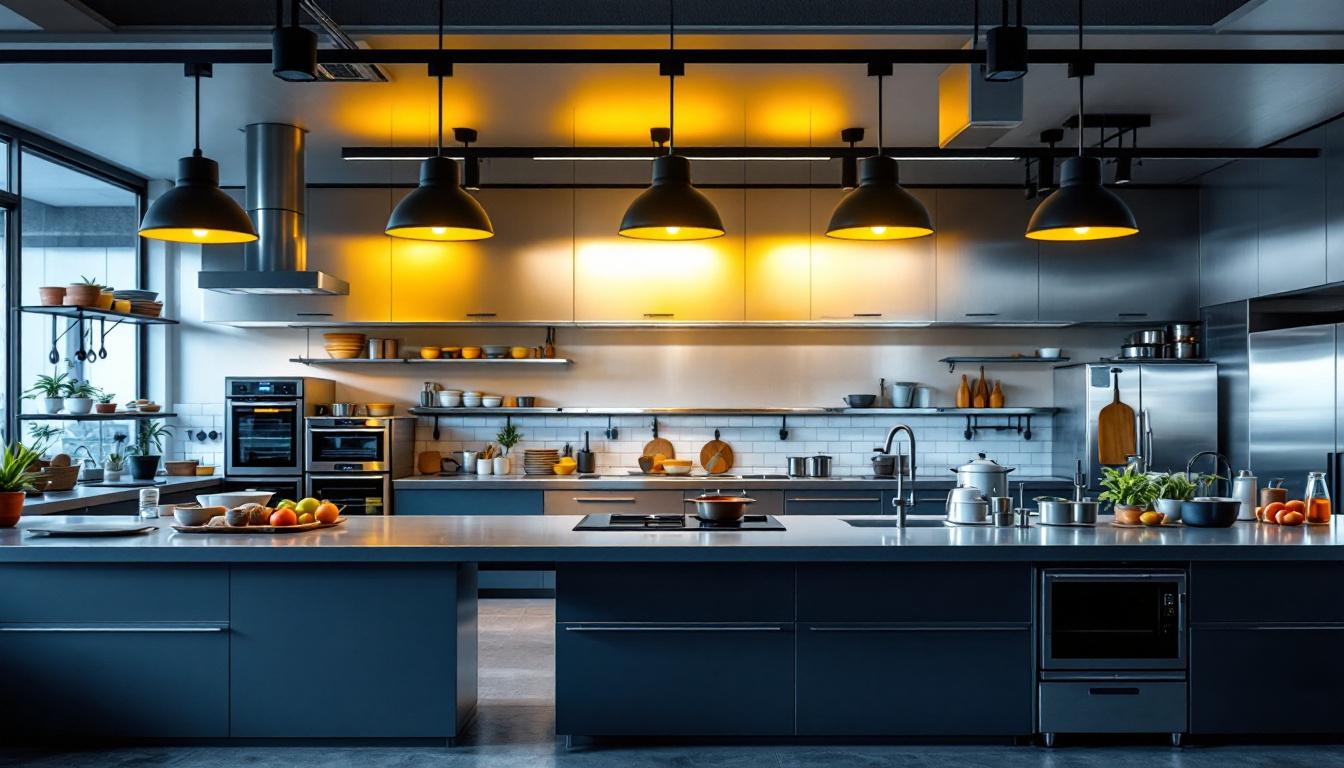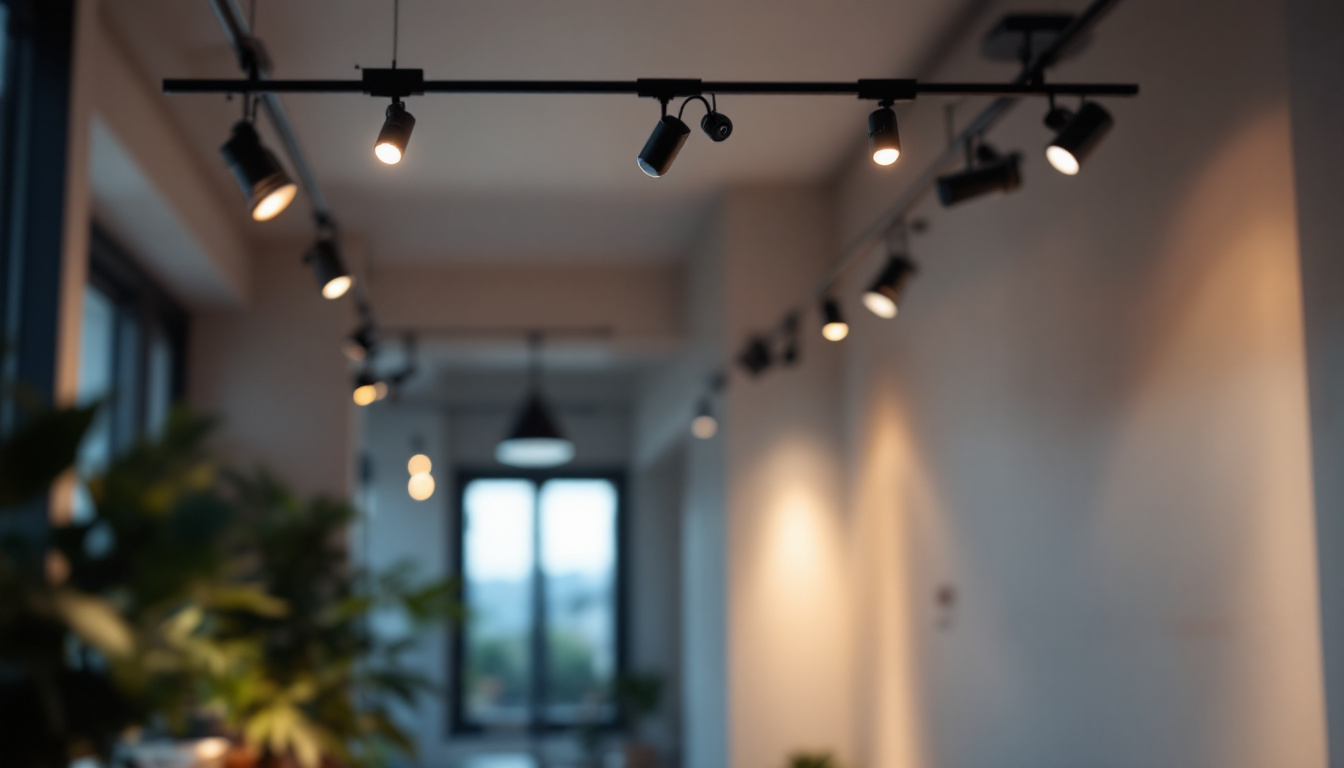
In the realm of commercial kitchens, lighting plays a crucial role in both functionality and ambiance. For lighting contractors, understanding the nuances of industrial kitchen lighting is essential to meet the specific needs of chefs, kitchen staff, and patrons alike. This article delves into the pros and cons of various lighting options available for industrial kitchens, providing valuable insights for lighting contractors.
Industrial kitchens are unique environments that require specialized lighting solutions. The primary goal is to ensure that the workspace is adequately illuminated for safety and efficiency. Different areas within the kitchen, such as prep stations, cooking lines, and dining areas, have varying lighting requirements. For instance, prep stations benefit from bright, even lighting to allow chefs to see the details of their ingredients, while cooking lines may require focused task lighting to highlight stovetops and grills where precision is crucial.
In addition to functionality, the type of lighting chosen can influence the overall atmosphere of the kitchen. A well-lit kitchen can enhance productivity and create a welcoming environment for both staff and customers. Lighting contractors must consider these factors when designing lighting systems for industrial kitchens. Moreover, the aesthetic appeal of the kitchen can also play a role in customer satisfaction, as a well-lit space can make the dining experience more enjoyable and visually appealing. The interplay of light and shadow can also be used to highlight certain areas, such as a display of freshly prepared dishes or a bustling cooking area, adding to the overall ambiance.
When assessing the lighting needs of an industrial kitchen, contractors should evaluate several key factors:
There are several types of lighting solutions suitable for industrial kitchens. Each has its own advantages and disadvantages, making it essential for lighting contractors to choose wisely based on the specific needs of the kitchen.
Fluorescent lighting has long been a staple in commercial kitchens due to its affordability and efficiency. These lights provide bright, even illumination, making them suitable for large work areas.
However, fluorescent lights can have a shorter lifespan compared to other options, and their color rendering may not be optimal for food presentation. Additionally, they can flicker and hum, which may be distracting in a busy kitchen environment. Despite these drawbacks, many kitchens still rely on fluorescent lighting because it is easy to install and maintain, and it can be found in various sizes and configurations to fit different spaces. Furthermore, advancements in technology have led to the development of high-efficiency fluorescent bulbs that reduce energy consumption while still providing adequate lighting.
LED lighting has gained popularity in recent years for its energy efficiency and longevity. These lights can last up to 25 times longer than traditional incandescent bulbs, making them a cost-effective choice in the long run.
Moreover, LEDs offer a wide range of color temperatures and can be dimmed to create the desired ambiance. They also produce less heat, which is particularly beneficial in hot kitchen environments. However, the initial investment for LED fixtures can be higher than other options, which may deter some contractors. It’s worth noting that the long-term savings on energy bills and reduced maintenance costs often outweigh the upfront expenses. Additionally, many LED products are now designed to be more aesthetically pleasing, allowing for creative lighting designs that enhance the overall kitchen atmosphere while also providing functional illumination.
Halogen lights are a type of incandescent lighting that provides bright, white light and excellent color rendering. This makes them ideal for areas where food presentation is crucial, such as plating stations.
Despite their advantages, halogen lights are less energy-efficient than LEDs and can generate significant heat, which may not be ideal for industrial kitchens. They also have a shorter lifespan compared to LEDs, making them a less sustainable option. Nevertheless, halogen lighting is often favored for its ability to showcase the true colors of food, enhancing the visual appeal of dishes before they are served. In addition, halogen fixtures can be easily integrated into track lighting systems, allowing for flexibility in directing light exactly where it is needed. This adaptability can be particularly useful in dynamic kitchen environments where the layout or workflow may change frequently.
Understanding the advantages of different lighting solutions can help contractors make informed decisions. Here are some of the primary benefits of effective industrial kitchen lighting:
Proper lighting is essential for ensuring safety in industrial kitchens. Well-lit workspaces reduce the risk of accidents and injuries, allowing staff to navigate the kitchen with confidence. Adequate lighting also helps prevent food contamination by making it easier to spot spills or hazards.
When kitchen staff can see clearly, they can work more efficiently. Bright, even lighting minimizes eye strain and allows chefs to focus on their tasks without distractions. This can lead to faster meal preparation and improved overall workflow in the kitchen.
Lighting plays a crucial role in food presentation. Properly illuminated dishes can enhance the visual appeal of meals, making them more enticing to customers. This is particularly important in establishments where food presentation is a key aspect of the dining experience.
While there are numerous benefits to industrial kitchen lighting, there are also potential drawbacks that contractors should be aware of:
One of the most significant challenges for lighting contractors is the initial cost associated with installing high-quality lighting systems. While energy-efficient options like LEDs can save money in the long run, the upfront investment can be substantial, particularly for large kitchens.
Different lighting types come with varying maintenance needs. For example, fluorescent lights may require more frequent replacement due to their shorter lifespan. Additionally, the need for specialized fixtures or bulbs can complicate maintenance efforts, leading to increased downtime in the kitchen.
Some lighting solutions, particularly halogen and incandescent bulbs, can generate significant heat. In an already hot kitchen environment, this can lead to discomfort for staff and increased cooling costs. Contractors must consider the thermal impact of their lighting choices and seek solutions that minimize heat generation.
Different areas within an industrial kitchen have distinct lighting needs. Understanding these differences can help contractors design an effective lighting plan that meets the specific requirements of each space.
Cooking areas require bright, focused lighting to ensure that chefs can see their work clearly. Overhead lighting should be complemented by task lighting, such as under-cabinet fixtures, to illuminate stovetops and prep areas. LED lights are often the best choice here due to their energy efficiency and ability to provide bright, white light.
Prep stations benefit from bright, even lighting that minimizes shadows. This can be achieved through a combination of overhead and task lighting. Dimmable LED fixtures can also be useful, allowing chefs to adjust the brightness based on the task at hand.
In dining areas, the lighting should create a warm and inviting atmosphere. This can be achieved with pendant lights, wall sconces, or even decorative fixtures that enhance the overall design of the space. Warmer color temperatures are often preferred in dining areas to create a cozy ambiance.
The world of lighting is constantly evolving, and industrial kitchens are no exception. Staying informed about emerging trends can help lighting contractors provide innovative solutions to their clients.
Smart lighting technology is becoming increasingly popular in commercial settings. These systems allow for greater control over lighting, enabling users to adjust brightness and color temperature based on specific needs. Additionally, smart lighting can be integrated with building management systems, enhancing energy efficiency and reducing costs.
As sustainability becomes a priority for many businesses, the demand for eco-friendly lighting solutions is on the rise. Contractors should consider options that utilize renewable materials and energy-efficient technologies. This not only benefits the environment but can also appeal to clients looking to reduce their carbon footprint.
Human-centric lighting focuses on creating environments that support the well-being of occupants. This approach considers factors such as circadian rhythms and the impact of light on mood and productivity. Implementing human-centric lighting solutions in industrial kitchens can enhance staff well-being and improve overall performance.
Industrial kitchen lighting is a critical aspect of kitchen design that requires careful consideration from lighting contractors. By understanding the pros and cons of various lighting solutions, contractors can make informed decisions that enhance safety, productivity, and the overall dining experience.
As the industry continues to evolve, staying abreast of emerging trends and technologies will be essential for contractors looking to provide the best lighting solutions for their clients. Whether it’s through energy-efficient LEDs, smart lighting systems, or sustainable practices, the future of industrial kitchen lighting holds exciting possibilities.
Ready to elevate your lighting game in industrial kitchens? Look no further than LumenWholesale for a comprehensive range of spec-grade lighting products that promise quality, affordability, and convenience. Our direct-to-contractor approach ensures you get the best value on top-tier lighting solutions, all while enjoying the benefits of bulk purchasing with free shipping. Don’t let inflated markups dim your project’s potential. Choose LumenWholesale for lighting that meets the highest industry standards and transforms any kitchen space. Discover our selection and start saving today by visiting Wholesale Lighting at the Best Value.

Discover how LED wall-mounted lights can enhance your business’s profitability.

Discover the top strategies lighting contractors use to optimize track lighting systems for any space.

Discover the secrets to maximizing profits in the lighting industry with our comprehensive guide for contractors.

Discover essential tips for lighting contractors to prevent common pitfalls when working with bullet LED lights.